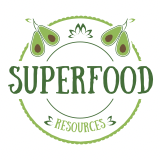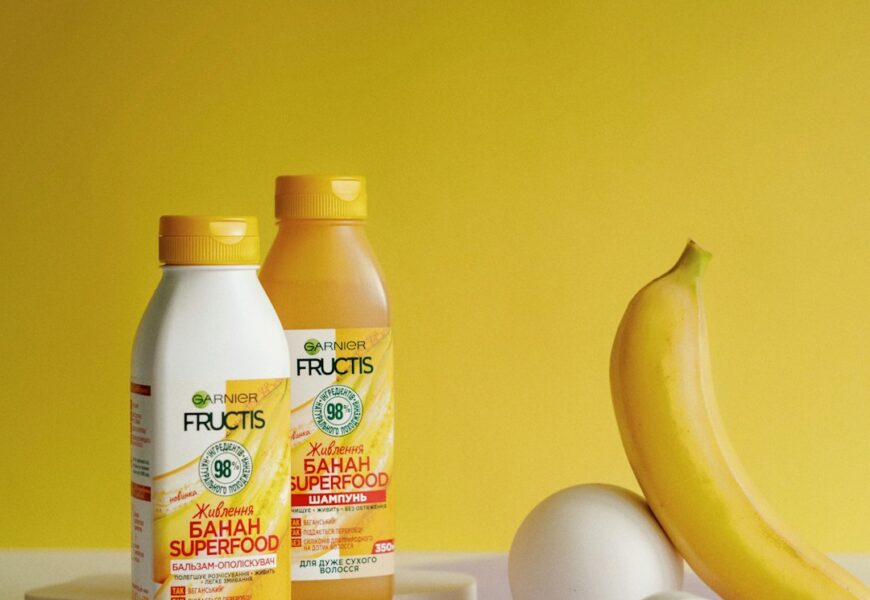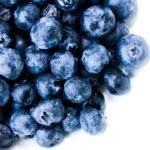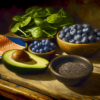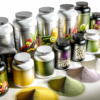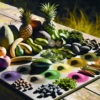The Ultimate Guide to Shopping for Superfood Products
Introduction
Welcome to the colorful and nutritious world of superfoods! Whether you’re a seasoned health enthusiast or just beginning to explore better eating habits, understanding how to shop for superfood products can elevate your nutrition game significantly. These powerful foods pack a punch in terms of vitamins, minerals, and antioxidants, offering numerous health benefits in each bite. In this guide, we’ll help you find your footing in the bustling aisles of superfood options, ensuring you make choices that align perfectly with your healthy eating goals. Let’s dive in and unlock the secrets to selecting the best superfoods for your diet.
Understanding Superfood Products
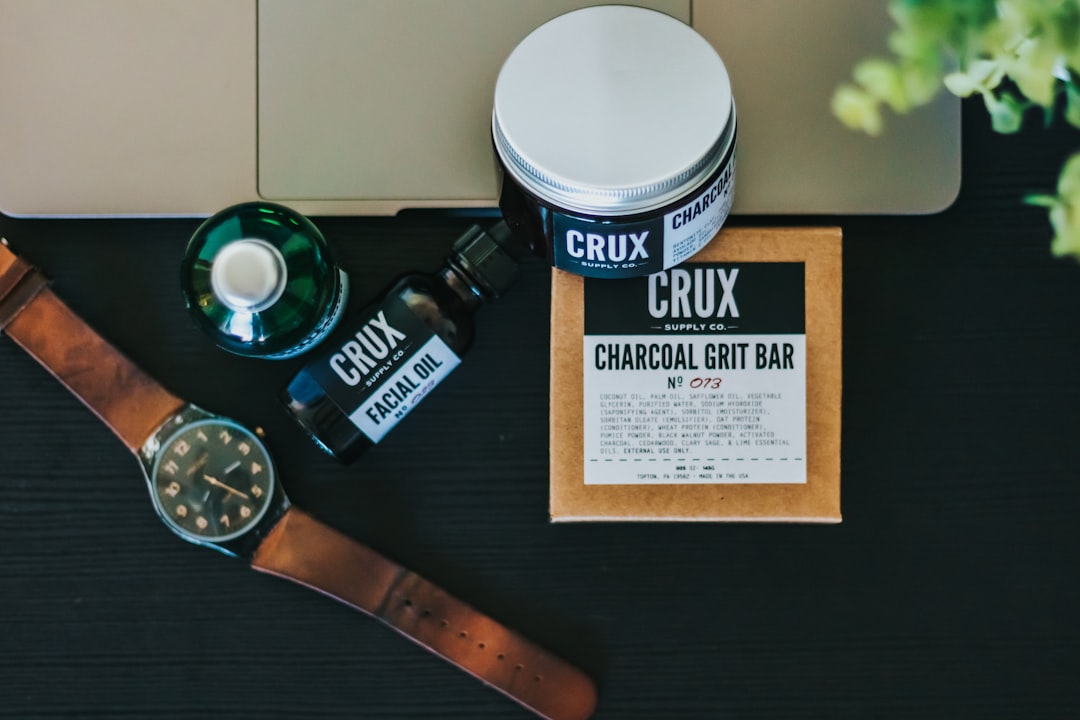 Image courtesy: Unsplash
Image courtesy: Unsplash
What are superfoods?
Superfoods are primarily plant-based but also some fish and dairy, thought to be nutritionally dense and thus good for one’s health. Blueberries, salmon, kale, and acai are just a few examples of foods that have garnered the “superfood” label. However, there are no set criteria for determining what is and what is not a superfood. Generally, superfoods contain high levels of much-needed vitamins, minerals, and antioxidants.
Benefits of incorporating superfoods into your diet
Integrating superfoods into your diet can offer a wealth of health benefits. They are renowned for their ability to enhance heart health, weight management, energy levels, and even reduce the effects of aging. Antioxidants found in superfoods such as berries and leafy greens can help ward off chronic diseases like cardiovascular disease, type 2 diabetes, and cancer. Moreover, superfoods are beneficial for one’s mental health and can help maintain brain function, thanks to their high omega-3 fatty acids and dietary fiber.
How to Identify High-Quality Superfood Products
Reading labels and ingredients
When shopping for superfood products, start with the ingredient label. High-quality superfoods will list all natural, recognizable ingredients with the superfood as one of the first few items. Avoid products with a long list of ingredients, especially those that are hard to pronounce or sound like chemical names. This often signifies unnecessary additives and fillers.
Certifications to look for
Certifications can tell you a lot about the product’s quality and ethical considerations. Look for certifications such as USDA Organic, Non-GMO Project Verified, or Fair Trade Certified. These labels ensure that the products meet strict standards regarding how they are grown, handled, and processed. Organic certifications, for instance, indicate that the food was produced without synthetic pesticides and fertilizers, which can be beneficial for your health and the environment.
Checking for additives and preservatives
Lastly, check the superfood product for additives and preservatives, which can diminish the health benefits. Quality superfood products will be free from artificial flavors, colors, and preservatives. These ingredients are typically included to extend shelf life or enhance taste but can be harmful to your health. Opting for products with simple, pure ingredients is always best for maximizing your nutritional intake.
Where to Find Superfood Products
Navigating where to buy superfoods is essential for incorporating these nutrient-dense items into your diet without hassle. Here’s where you can start your search.
Local grocery stores
Most local grocery stores have dedicated health food sections where you can find a variety of superfood products. Look for items like chia seeds, quinoa, fresh kale, and blueberries. Don’t forget to check out the frozen section too! Frozen superfoods can be just as nutritious as fresh ones and often come at a lower price point.
Health food stores
Health food stores are treasure troves of superfood products. These stores often offer a wider variety, including some of the more obscure superfoods that may not be available at regular grocery stores. You can also find a range of organic and non-GMO options here, ensuring you get the highest quality products.
Online retailers
Shopping online for superfoods opens up a world of options that might not be available locally. Websites like Amazon, Thrive Market, and specific health food sites offer everything from bulk superfoods to specialized blends. Shopping online also allows you to easily compare prices and read customer reviews to make the best choices for your health needs.
Budget-Friendly Superfood Options
Eating healthily doesn’t have to break the bank. Here are some tips and alternatives that can help you enjoy the benefits of superfoods without straining your budget.
Tips for shopping on a budget
– Buy in bulk: Items like nuts, seeds, and whole grains are often available in bulk, which can save you money in the long run.
– Look for sales and discounts: Keep an eye on weekly flyers and subscribe to store newsletters to stay informed about sales on superfood products.
– Consider store brands: Many store brands offer superfood products at a lower price point than name brands without compromising on quality.
Affordable superfood alternatives
If some superfoods seem overly expensive, consider these affordable alternatives:
– Instead of goji berries, try dried cranberries or raisins.
– Swap out acai berries for more common, yet nutrient-rich blueberries.
– Use spinach as an economical alternative to kale for green smoothies and salads.
These alternatives provide similar nutritional benefits and are much gentler on your wallet.
Tips for Smart Superfood Shopping
Making a shopping list
Planning is crucial when shopping for superfoods. Start by creating a detailed list of superfoods you want to integrate into your meals. Research their health benefits and seasonality to make informed choices. This way, you’re more likely to stick to your list and avoid impulse buys. Include a mix of staples like blueberries, kale, and quinoa, and more exotic items like goji berries or chia seeds to keep your diet interesting and nutritious.
Avoid and instead, focus on marketing traps
Superfood labels can be enticing, often making bold health claims. To shop wisely, focus primarily on the nutritional content rather than flashy labels. Learn to read and understand ingredient lists and nutrition facts. Opt for products with minimal processing and without added sugars or unhealthy fats. Remember, just because a product is marketed as a superfood, doesn’t always mean it’s the best choice.
Buying in bulk for savings
Purchasing superfoods in bulk can lead to significant savings, especially if you use these foods regularly. Items like nuts, seeds, and whole grains are typically available in bulk bins, allowing you to buy exactly the amount you need. This not only reduces waste but also tends to be more economical. Store bulk purchases properly to maintain their freshness longer.
Incorporating Superfoods into Your Meals
Simple recipes for beginners
For those new to superfoods, start with simple recipes that don’t require exotic ingredients or complicated steps. Try adding a spoonful of spirulina to your smoothies or tossing a handful of kale into a simple salad. Overnight oats with chia seeds offer a quick and nutritious breakfast option, while quinoa can serve as a versatile base for a variety of dishes.
Creative ways to add superfoods to your diet
Get creative by incorporating superfoods into your existing favorite dishes. Blend spinach or kale into pasta sauces for an extra nutrient boost without altering the flavor significantly. Sprinkle hemp seeds on your yogurt or granola for a crunch. Use avocado as a healthy fat in baking, replacing butter in recipes like brownies.
Meal planning with superfoods
Effective meal planning ensures that you incorporate a diverse range of superfoods into your diet. Design a weekly menu that includes superfoods in every meal. For example, start with a smoothie packed with berries and seeds for breakfast, a quinoa and vegetable bowl for lunch, and a lean protein like salmon with a side of sweet potatoes for dinner. Snack on nuts or dried fruits to keep your energy levels up throughout the day. This structured approach not only enhances your nutritional intake but also simplifies grocery shopping and meal preparation.
How to Store Superfood Products
Proper storage techniques
Storing superfood products correctly is crucial to maintaining their nutritional value and taste. Always read the label for specific storage instructions, but here are a few general tips. Dry products like quinoa, chia seeds, and nuts should be kept in airtight containers in a cool, dark place to prevent them from becoming rancid. Fresh superfoods like berries and leafy greens should be stored in the refrigerator’s crisper to keep them fresh and nutrient-rich for longer. For superfood powders, keep them tightly sealed in their original packaging or transfer them to airtight containers and store away from direct sunlight and moisture.
Shelf life of different superfoods
The shelf life of superfoods can vary greatly depending on their form and storage conditions. For example, whole grains and seeds like buckwheat and flaxseed typically last up to a year when stored properly, while nuts may have a shorter shelf life of about six months due to their oil content. Fresh superfoods like kale and other greens should ideally be consumed within a week of purchase. Superfood powders have a longer shelf life, often ranging from one to two years unopened. Always check the expiration date and look for signs of spoilage, such as a musty smell or off-color, to ensure quality and safety.
Bonus Tips for Maximizing Nutrition
 Image courtesy: Unsplash
Image courtesy: Unsplash
Pairing superfoods for enhanced benefits
To get the most out of your superfoods, consider pairing them based on their synergistic effects. For instance, combining a vitamin C-rich food like oranges with iron-rich spinach can enhance iron absorption from the spinach. Similarly, pairing healthy fats like avocado with kale can help in absorbing fat-sweet vitamins more effectively from kale.
Superfood combinations to try
There are numerous tasty and nutritious superfood combinations to explore. Here are a few to get you started:
– Chia seeds and berry smoothie: Mix chia seeds with your choice of berries in a smoothie for a fiber-rich and antioxidant-packed breakfast.
– Quinoa and black beans: Combine cooked quinoa with black beans for a powerful protein and fiber duo, perfect for a filling lunch or dinner.
– Spinach and almond salad: Toss fresh spinach with sliced almonds and a sprinkle of lemon juice for a refreshing salad that’s rich in vitamins and minerals.
Incorporating these combinations into your meals not only adds variety to your diet but also helps in maximizing the nutritional benefits of the superfoods you’re eating.
Conclusion
In your journey to healthier eating, incorporating superfoods into your diet can have tremendous benefits. By understanding what to look for, reading labels for key nutrients and avoiding products with unnecessary additives, you’re equipping yourself to make the best choices for your health and well-being. Remember, the most healthful superfood products are those that are minimally processed and packed with natural, beneficial ingredients. Start small, experiment with different superfoods, and see how they can enhance your overall health. Happy shopping and healthy living!
